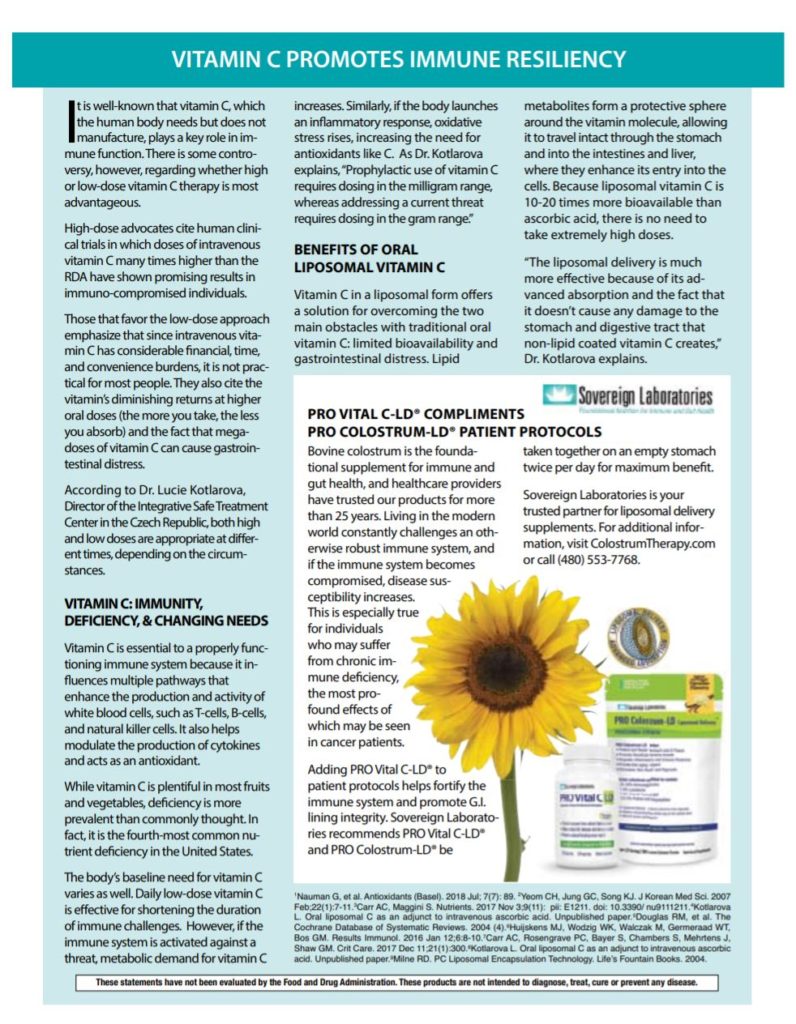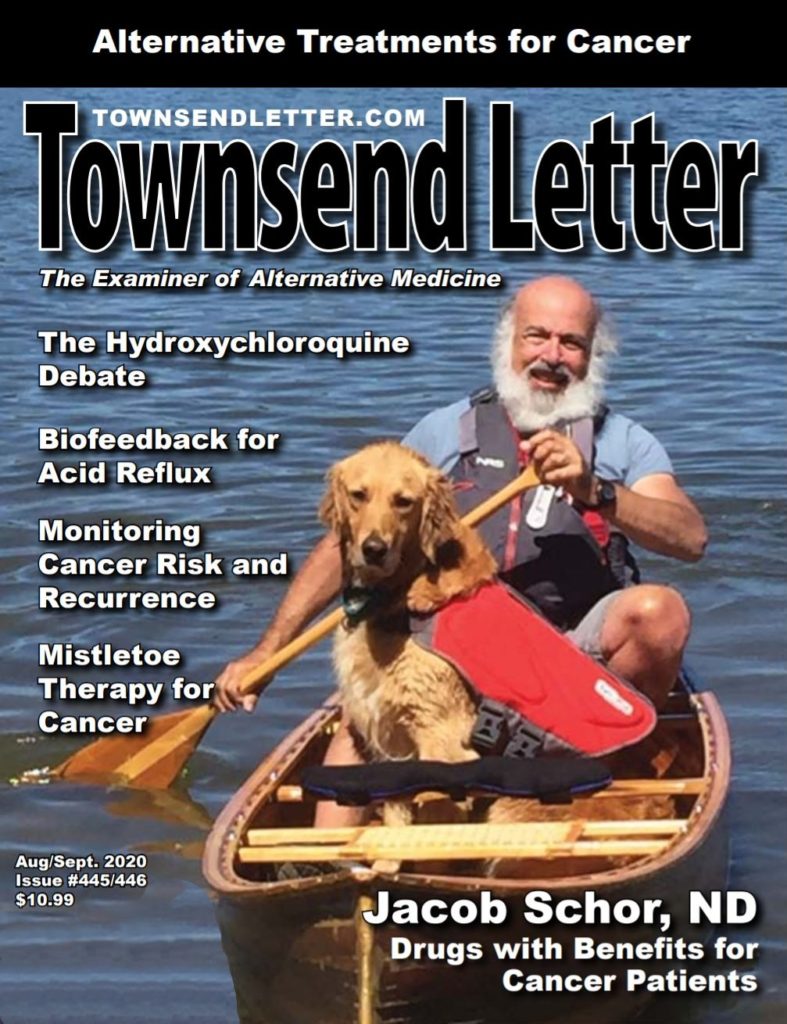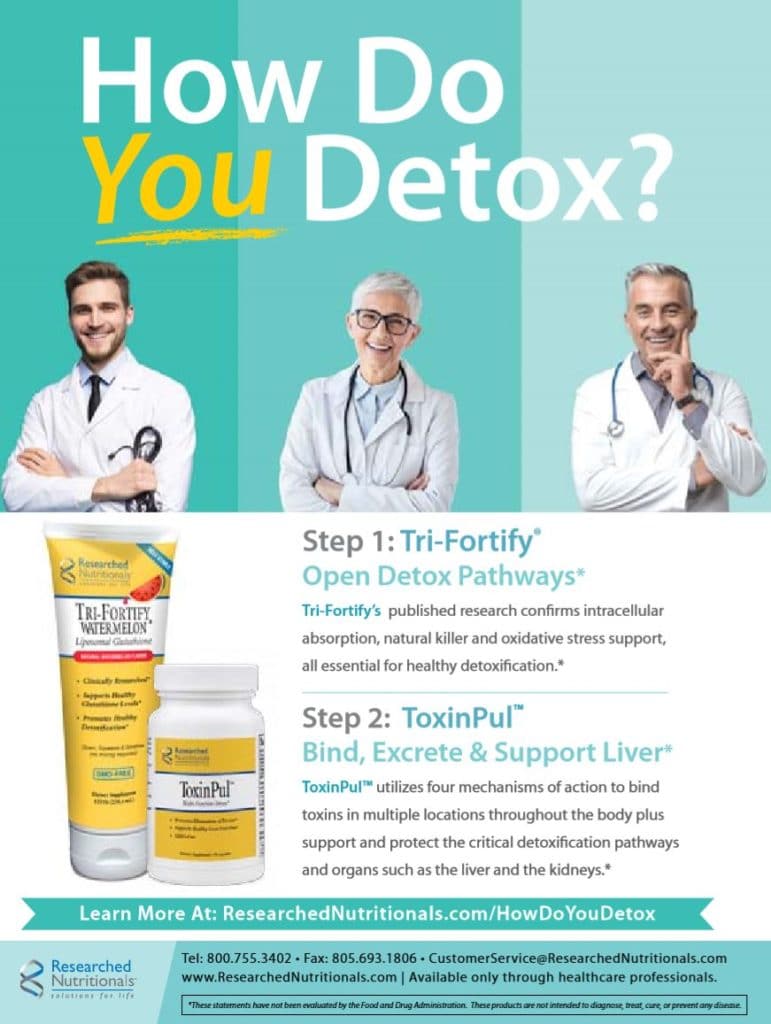…Letter from the Publisher, continued…
Is the p53 Tumor Suppressor Gene a Cancer Marker That Has Been Underutilized in Cancer Care?

Lisbon-based physician Serge Jurasunas has spent over a decade studying the role that the p53 gene plays in cancer care. Jurasunas has reviewed how the gene functions in numerous articles published in the Townsend Letter. In the best of times when there is no cancer, p53 signals the immune system to maintain its surveillance of cancer cells and activates metabolic pathways inducing cell apoptosis. The gene ensures mitochondrial functioning remains aerobic utilizing the Kreb’s cycle for ATP production, rather than anaerobic, producing ATP by glycolysis. From Jurasunas’ perspective unimpaired p53 activity makes the critical difference between the body’s ability to find and shut down incipient cancer and its inability to control a malignancy that grows aggressively if the gene is defective.
For reasons that remain unclear, standard of care in oncology ignores p53 gene activity assessment. p53 activates genes such as Bax and BcL2 that are responsible for upregulating or downregulating tumor cell activity and metabolic functioning as well as growth, migration, and apoptosis. Unlike “wild-type” p53 present in non-cancer cells, a mutant form of p53 is a strongly active metabolic signaler in tumor cells. Such a mutant form of p53 induces the intensive glucose uptake needed to maintain the energetically inefficient process of glycolysis in neoplastic cells. Both p53 and mutant p53 gene activity and proteins can be measured. Elevated mutant p53 levels are associated with increasing cancer activity and tumor growth and metastasis.

In this issue Jurasunas introduces us to the role that the nucleotide-adding telomere enzyme, telomerase, plays in assessing tumor cell activity. In life-aging research maintaining cellular telomere activity is considered critical if one is to achieve longevity. Unfortunately, that same telomere preservation is critical to neoplastic cell “immortality.” Unlike normal cells, cancer cell telomerase activity is prodigious and matches the activity of the p53 suppressor gene. Jurasunas measures p53 gene activity and compares it to telomerase activity. When the p53 gene activity is greater than telomerase, cancer activity is being controlled; when the p53 is lower than telomerase, the tumor is actively metastasizing.
Jurasunas has reviewed, in his earlier work in the Townsend Letter, how treatment can increase p53 activity using herbals and nutrients. He invites readers to further examine his work on his blog.
Cover Article: Jacob Schor, ND, Argues that Repurposed Drugs Should Be Included in Naturopathic Oncology Care

From the 1970s to late 1990s, there was a sharp schism between alternative cancer treatment and conventional cancer management. The latter approach consisted only of surgery, chemotherapy, and radiation; the former one espoused diet, supplementation, and unapproved “treatments.” For patients and practitioners there was a line in the sand—one either underwent conventional care covered by insurance or one engaged in alternative treatment, which was not reimbursable. Of course, for most patients, alternative medicine was only sought after conventional cancer treatment failed. Being in the advanced stages of cancer with widespread metastasis, most patients receiving alternative cancer care did poorly as well. Of course, a minority of patients experiencing late stage cancer did reverse their disease following alternative therapies. The hope that one could beat cancer using diet and herbals did maintain the schism between alternative and conventional camps.
In the early 2010s conventional cancer care was transformed by the introduction of novel cancer drugs targeting pathways vital for cancer cell metabolism and growth. Targeted immunotherapies for individual cancers promised to change cancer survival. At the same time research began in earnest to discover whether well-established drugs, such as metformin, might have a role in arresting cancer activity. Metformin, the most widely used drug in the treatment of diabetes as well as pre-diabetes, has been studied for its anti-cancer effect in numerous human malignancies. Similarly, other common drugs have demonstrated significant effectiveness, including aspirin, omeprazole, doxycycline, cimetidine, propranolol, coumadin, even sildenafil. (How’s that for a reason to get a Viagra prescription?)
Jacob Schor, ND, has challenged our absolute sense of the propriety of naturopathic medicine and distrust of conventional medicine in his Townsend Letter column, Curmudgeon’s Corner. Many truths that we hold sacrosanct because they have been passed down by our elders and have always been believed do not necessarily hold up under careful scrutiny. Unfortunately, evidence-based medicine does justify our reconsideration of a diagnostic or treatment that fails to be effective. Of course, some studies are faulty and should not nullify what we find valuable in our care. Schor argues that simply because an effective treatment is a drug should not automatically exclude it from the protocol we provide to our cancer patients. If the antibiotic, doxycycline, could increase our breast cancer patient’s chances of survival, it should be part of the regimen. To say to the patient that the only treatment to be used is diet and herbals is a disservice.
It is 2020 and the schism between natural medicine and conventional medical care is over. We need to employ the best of both in cancer treatment.




